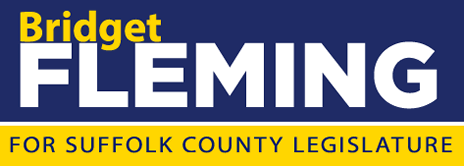Southampton Town officials will hold a roundtable debate of new legislation, proposed by Councilwoman Bridget Fleming to reduce the maximum size of new homes.
The proposed law would limit the size of new dwellings based on a calculation of the floor area in relation to the size of the lot, instead of a general 15,000-square-foot cap currently in place. Ms. Fleming said the change is intended to preserve the character of Southampton neighborhoods by curbing monster-sized homes, and to help protect property values.
On Tuesday, not all of the board members agreed that the proposed calculation involving gross floor area limits is the best way to regulate house size, with Supervisor Anna Throne-Holst among those saying the formula is complicated and difficult to understand.
The Town Board will use the roundtable—it will be open to the public, though a date has not yet been set—to discuss possible changes to the proposed law.
“Without naming any specific sights, I have seen myself, and certainly have gotten complaints from folks in the community, about these very, very large houses that we are seeing going up,” Ms. Fleming said this week. “When I researched it, I found that although almost all of the neighboring communities have set some sort of floor area limit, the town does not have anything on the books with regards to the ratio of floor area to lot size. This would change that.”
Currently, the town code does not allow new homes that have more than 15,000 square feet of floor space. There is also a regulation that says “roofed” structures cannot exceed between 5 and 20 percent of a lot, depending on the property, which can lower that cap.
“The Town Board of the Town of Southampton recognizes that there has been a proliferation of large homes being built within the town that are not in character with the neighborhood, the existing homes, or the community within which they are located,” the resolution pitched by Ms. Fleming says. “Indeed, many property owners, whether seeking to maximize their profit on speculative building or otherwise, are constructing homes that barely meet existing setbacks and ultimately consume the entire lot.”
The resolution goes on to note that these large homes block views and light as well as “negatively affecting neighbors and the visual character of these quaint communities.”
Ms. Fleming had at first proposed another option—that lots of 40,000 square feet or less have a maximum gross floor area of 2,000 square feet. Lots greater than 40,000 square feet, but less than 80,000 square feet, could have up to 5,000 square feet of gross floor area, and lots larger than 80,000 square feet could have 7,000 square feet of gross floor area.
The proposed law also states that any interior space between the floor and ceiling that exceeds 15 feet will be counted twice, and that any attics with a ceiling height higher than 7 feet must be included in the gross floor area.
The main concerns against the local law are that the changes might be too drastic, could diminish the quality of the architecture seen in the town, and that the formula would discourage preservation of smaller, historic homes by making it more difficult to add onto them.
According to Ms. Fleming, the proposed changes are inspired by building codes already implemented in the villages of North Haven and Sagaponack.
“It certainly still allows for large homes,” she said of the proposed legislation, “but limits some of what we are seeing that really interferes with the community character, property values for neighbors, and the viewsheds along the coast and farm fields.”
